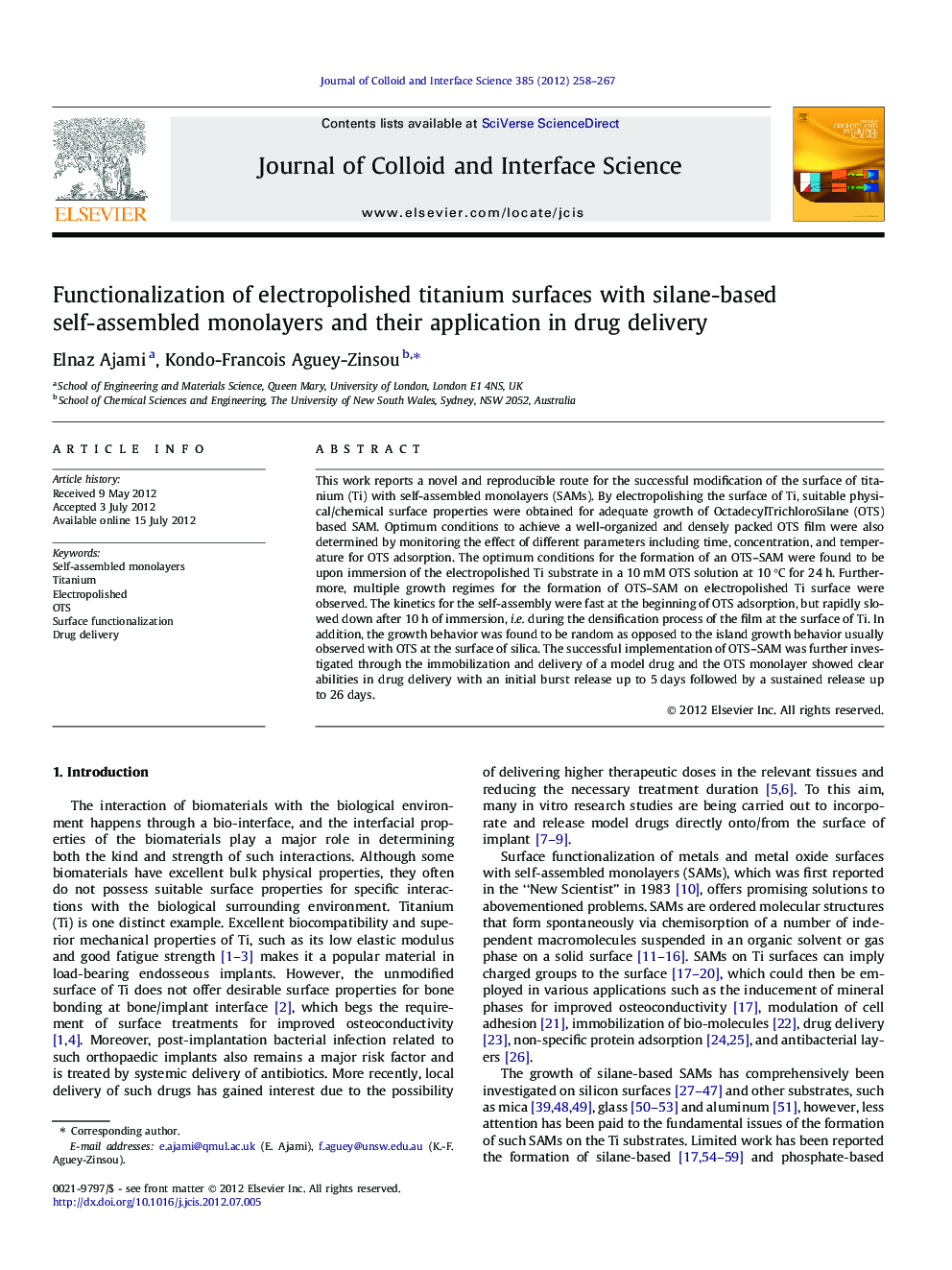| کد مقاله | کد نشریه | سال انتشار | مقاله انگلیسی | نسخه تمام متن |
|---|---|---|---|---|
| 608031 | 880566 | 2012 | 10 صفحه PDF | دانلود رایگان |

This work reports a novel and reproducible route for the successful modification of the surface of titanium (Ti) with self-assembled monolayers (SAMs). By electropolishing the surface of Ti, suitable physical/chemical surface properties were obtained for adequate growth of OctadecylTrichloroSilane (OTS) based SAM. Optimum conditions to achieve a well-organized and densely packed OTS film were also determined by monitoring the effect of different parameters including time, concentration, and temperature for OTS adsorption. The optimum conditions for the formation of an OTS–SAM were found to be upon immersion of the electropolished Ti substrate in a 10 mM OTS solution at 10 °C for 24 h. Furthermore, multiple growth regimes for the formation of OTS–SAM on electropolished Ti surface were observed. The kinetics for the self-assembly were fast at the beginning of OTS adsorption, but rapidly slowed down after 10 h of immersion, i.e. during the densification process of the film at the surface of Ti. In addition, the growth behavior was found to be random as opposed to the island growth behavior usually observed with OTS at the surface of silica. The successful implementation of OTS–SAM was further investigated through the immobilization and delivery of a model drug and the OTS monolayer showed clear abilities in drug delivery with an initial burst release up to 5 days followed by a sustained release up to 26 days.
Figure optionsDownload high-quality image (90 K)Download as PowerPoint slideHighlights
► We propose a novel route to form organized self-assembled monolayers on titanium.
► Effect of monolayer growth conditions on the quality of the film is investigated.
► Optimum growth condition is at 10 °C in 10 mM solution for 24 h.
► Growth kinetics starts with a fast phase and slows down after 10 h.
► Formed monolayer shows abilities in immobilization and release of a drug.
Journal: Journal of Colloid and Interface Science - Volume 385, Issue 1, 1 November 2012, Pages 258–267